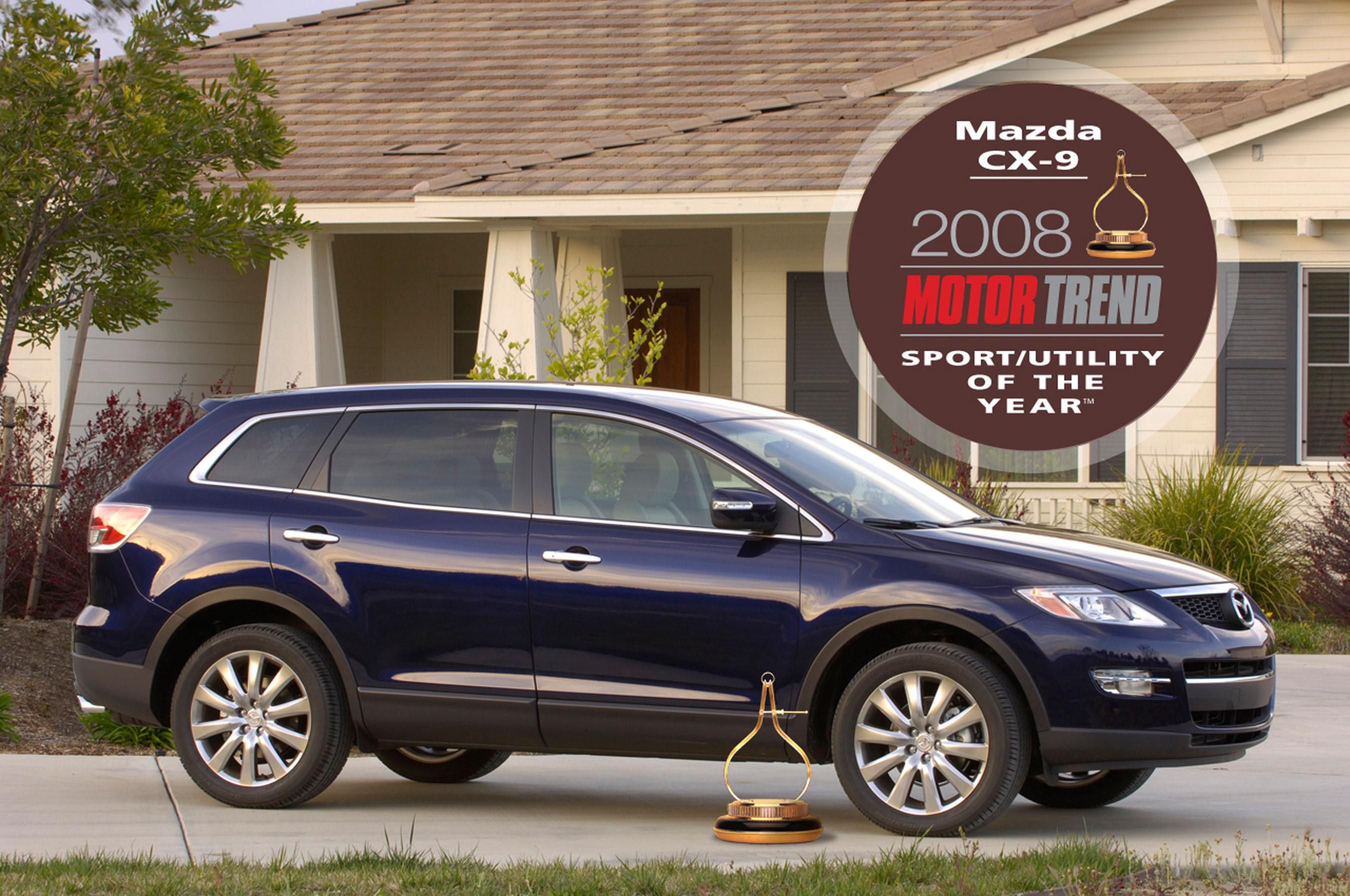Motor Trend named the Mazda CX-9 crossover SUV its 2008 Sport/Utility of the Year™. Beating one of the toughest fields in recent memory, the CX-9 was, according to MOTOR TREND editor in chief, Angus MacKenzie, the judges’ unanimous decision. It topped 11 other contenders.
“What a thrill, and what an honor, to receive such an award,” said Jim O’Sullivan, President and CEO, Mazda North American Operations. “Since CX-9 launched in January, it’s won the hearts and checkbooks of customers, the hearts and minds of journalists, and now the greatest of honors MOTOR TREND can bestow on a crossover SUV. I’m just so proud of everyone at Mazda, both here in the US and in Japan.”
The Mazda CX-9 was designed and engineered specifically for the North American market and consumer. It is powered by a 273-hp 3.7-liter V6 engine and a six-speed Sport AT automatic transmission with manual-shift mode.
Priced from $29,430, the CX-9 is available in three trim levels – Sport, Touring and Grand Touring – and in either front- or all-wheel drive. The vehicle seats up to seven passengers in three rows, and offers cutting-edge safety technology, including front, side and three-row side-curtain airbags, ABS, dynamic stability control, traction control and roll-stability control, all as standard equipment.
The Mazda CX-9 is one of the safest vehicles on the road, too, having recently received the highest possible ratings in frontal and side impact crashes by the governments’ National Highway Traffic Safety Administration (NHTSA). In addition to receiving a five-star frontal and side impact crash-test rating, the CX-9 received four-star rollover resistance ratings. No other SUV on the market today has received ratings that are superior to the CX-9.
To judge contenders for the award, MOTOR TREND’s editorial staff conducted exhaustive off-road, street and track testing, and carefully considered essentials such as driving performance, safety and features. Sport/Utility of the Year is not a comparison test. Each contender was evaluated against three simple criteria: superiority (engineering, design, utilization of resources); significance (its impact on the market), and value (what buyers get for their money versus the competition).

